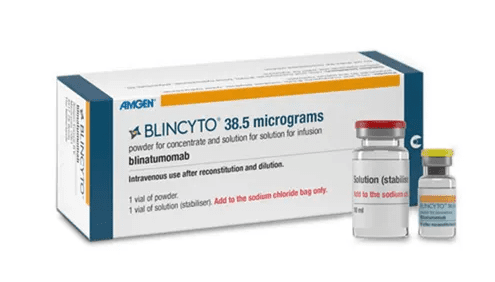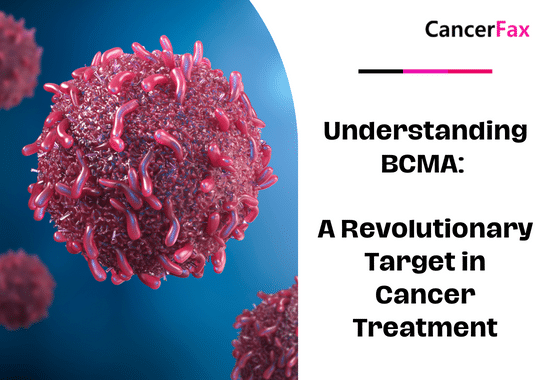Results from a big clinical trial show that adding blinatumomab (Blincyto) to the treatment of people with acute lymphoblastic leukemia (ALL) who are in remission, even if there are no signs of their disease, can help them live longer.
In the study, giving blinatumomab along with chemotherapy made people with cancer that had gone into remission live much longer than those who only got chemotherapy, which is the current standard treatment. Patients in the trial were not only in remission, but there was no sign of their cancer. This is called having minimum residual disease (MRD)-negative ALL.
Mhedzisiro yemuyedzo yakaratidzwa pamusangano wepagore weAmerican Society of Hematology (ASH) muNew Orleans muna Zvita 2022.
In 2018, the Food and Drug Administration (FDA) cleared blinatumomab to treat people with MRD-positive ALL who were in remission but still showed signs of cancer during follow-up tests. Even though recurrences after remission are always possible, people with MRD-positive ALL have a higher chance of their cancer coming back after their first treatment than those who do not have MRD.
At the ASH meeting, the results were shown for people who did not have MRD after their first medication.
Pamakore 3.5 mushure mekutanga kurapwa kwepashure-remission, 83% yevarwere vakabatwa neblinatumomab uye chemotherapy vakanga vachiri vapenyu, asi 65% chete yevarwere vakarapwa nekemotherapy chete vakanga vachiri vapenyu.
Blinatumomab inoshanda kune MRD-negative ALL zvakare
B-cell ALL is the most common type of ALL in both adults and children. It is a type of gomarara reropa that spreads quickly and is very dangerous. Chemotherapy is the standard treatment, and it often leads to remission. However, a lot of people get sick again, even if tests done after treatment show no signs of disease.
Immunotherapy drugs have shown some promise as a way to treat cancer after it has gone into remission and lower the risk of it coming back.
Rudzi rwe immunotherapy called a bispecific T-cell engager (BiTE) is what blinatumomab is. It sticks to both T cells and cancer cells at the same time. This makes it easy for T cells to find and kill the cancer cell by bringing them closer together. The drug, which is given through an IV, has been shown to be more effective than chemotherapy at treating B-ALL that has come back in children and young adults who have already been treated for it.
Muedzo uyu, uyo uri kuitwa neECOG-ACRIN Cancer Research Group nerubatsiro kubva kuNCI, wakatanga muna 2013 kuona kuti blinatumomab ingabatsire here vanhu vachangobva kubatwa neB-cell ALL.
Kunyange zvazvo vanhu mazana mana nemakumi masere nevasere vakatora chikamu mukutongwa kwese, mhedzisiro yakaratidzwa pa ASH yaingova yevanhu mazana maviri nemakumi maviri nevana vakanga vari mukuregererwa uye MRD-negative mushure menguva dzose yekutanga chemotherapy regimens. Varwere vakapihwa mamwe chemotherapy mukuwedzera kune blinatumomab kana chemotherapy chete. Zvino, vese vezvidzidzo vakawana chemotherapy mwedzi mitanhatu yega yega kwemakore 488. Vamwe vanhu vakawanawo mabone marrow transplants kana chiremba wavo akafunga kuti zvaive nani.
Kwete chete kuwedzera blinatumomab kune chemotherapy kunatsiridza kupona kwese, asi zvakare kwakaita kuti varwere vararame kwenguva refu vasina cancer yavo kudzoka vachienzaniswa nevaya vakangowana chemotherapy.
Dr. Litzow said that none of the people who took blinatumomab had any unexpected side effects. Some of the most common side effects of blinatumomab are fever, responses to the infusion, headaches, infections, tremors, and chills.


